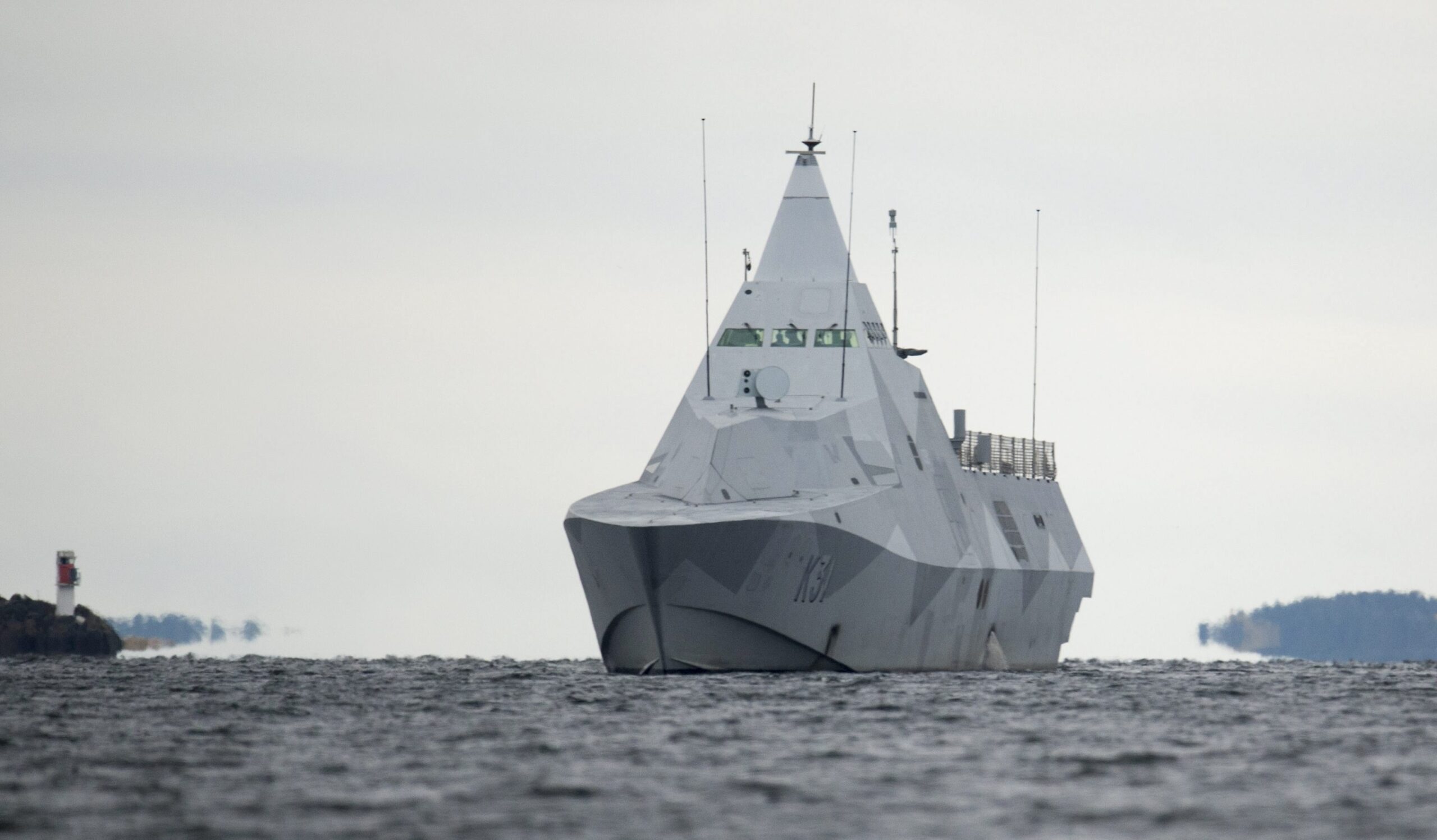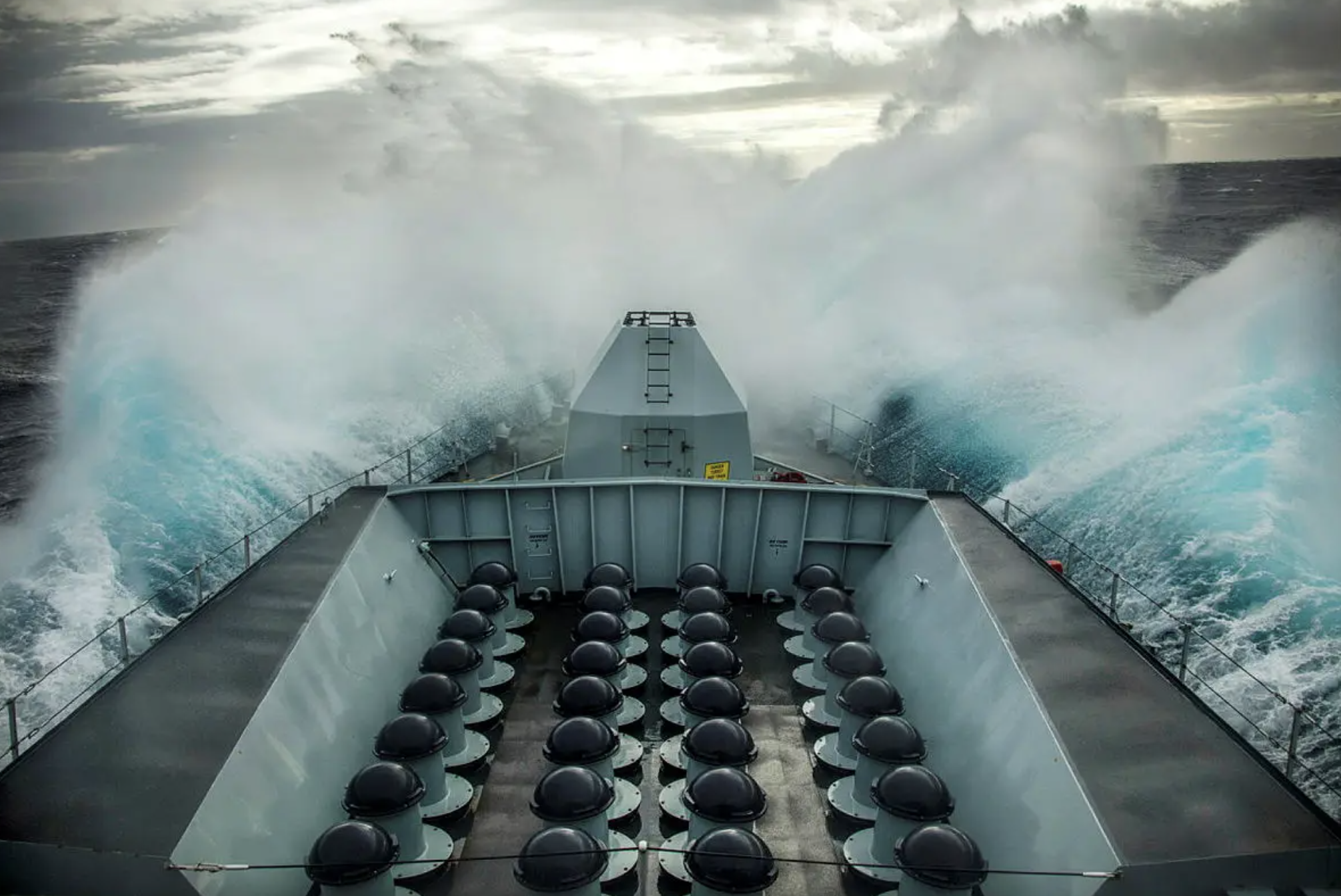The Swedish Navy’s stealthy Visby class corvettes are about to get a significant boost in firepower, with the addition of the Common Anti-air Modular Missile (CAMM) — a surface-to-air missile that can engage a wide variety of threats. This would fill what was otherwise a significant gap in these fascinating warships’ capabilities.
The sale of the naval missiles is a boost for the manufacturer, European missile house MBDA, and follows recent success for the land-based version of the CAMM, Poland having recently signed a multi-billion-dollar deal for the extended-range CAMM-ER.
MBDA announced the Swedish CAMM order yesterday. The contract was signed between MBDA and the Swedish Defense Materiel Administration, or FMV in its Swedish abbreviation. The contract will provide CAMM for all five of the Swedish Navy’s Visby class corvettes — which you can read all about in this previous feature. MBDA did not provide a timeline for when these systems will be installed and become operational.

In the Swedish Navy application, the CAMM missiles will be deployed from the Sea Ceptor naval air defense system, another MBDA product. Sea Ceptor entered service with the U.K. Royal Navy in 2018 and has since been ordered or selected by Brazil, Canada, Chile, Italy, New Zealand, Pakistan, Poland, and Saudi Arabia.

In its own press release, MBDA describes Sea Ceptor as “a latest-generation naval air defense system, providing robust self- and local-area air defense against simultaneous attacks, including saturation attacks, across the full 360-degree threat axis. With a wide target set from supersonic anti-ship missiles to attack helicopters and uncrewed air vehicles, the system has been designed to counter advanced threats.”
Meanwhile, the CAMM missile — which draws from some elements of MBDA’s earlier ASRAAM air-to-air missile — is also in use in ground-based form with the British Army, as part of the Sky Sabre system, which you can read more about here. The extended-range CAMM-ER version is meanwhile in development for both land and naval applications. The CAMM-ER was the recipient of a recent $4.9-billion order from Poland, as part of the Narew ground-based air defense system, which will see over 1,000 CAMM-ER missiles procured for over 100 launchers.
Key characteristics of the CAMM missile are a soft vertical launch system (in which the missile’s rocket motor ignites outside of the launch tube) and an active radar-homing seeker. Each of the highly agile CAMM missiles weighs 218 pounds, is 10 feet 6 inches long, with a diameter of 6.5 inches, and can hit targets at ranges of more than 15.5 miles.
As for the specific installation on the Visby class, MBDA has not announced details, However, an artist’s impression provided by the company, as seen at the top of this story, apparently includes a nine-cell vertical launch system with a capacity for 36 missiles.
Adding Sea Ceptor and its CAMM missile to the 640-ton displacement Visby class will make these already potent ships much more flexible, introducing an entirely new air defense capability.

Designed to protect both the host vessel and other friendly vessels, CAMM is optimized to defeat attacks by multiple anti-ship missiles, or drones, for example. It can also engage fixed-wing and rotary-wing aircraft. Is radar seeker is combined with a datalink to provide mid-course updates, for improved accuracy and single-shot kill probability. The CAMM doesn’t require dedicated tracking or fire-control radars/illuminators, instead getting all the targeting data it needs from a modern 3D target indication and surveillance radar. On the Visby class, this is the very capable Saab Sea Giraffe AMB 3D radar, with passive electronically scanned array (PESA) technology.

Other weapons already found on the Visby class, the first of which was commissioned into service in 2002, include a single Bofors 57mm Mk 3 naval gun, eight RBS 15 Mk 2 anti-ship missiles, four 400mm torpedo launchers, plus mines and depth charges. The vessels can also accommodate a helicopter on the upper deck, although there is no hangar.
As we have explored in the past, however, the real standout feature of these novel warships is their extensive use of low-observable design elements, which apparently results in a remarkably low radar cross-section. In some scenarios, in fact, the Visby class can almost disappear from radar altogether, or otherwise appear much like a small buoy, or simply get lost in background clutter. This is especially true when operating in its usual environments — the complex littorals off Sweden’s shores.
The Visby class also makes extensive use of composite materials, which also help provide its greatly reduced radar signature. Efforts are also made to acoustically insulate internal systems and reduce the ships’ thermal and acoustic, making them harder to detect using sonar and infrared sensors, as well.
Regarding the aforementioned weapons, these are also subjected to a stealth treatment, with the 57mm main gun being concealed inside a radar-deflecting cupola when not in use. The RBS 15 anti-ship missile launchers and torpedo tubes are accommodated inside the hull, while certain antennas are flush-mounted to further mitigate the overall radar signature.

Before the arrival of the Sea Ceptor and CAMM, however, the ability of the Visby class to engage different kinds of aerial targets was strictly limited. The ships were already provided with the Rheinmetall Multi Ammunition Softkill System (MASS), although, as its name indicates, this launches decoys to help confuse hostile missiles and sensors, rather than destroy them outright. Onboard wlectronic warfare and electronic support measure systems also assist with greater survivability and situational awareness when it comes to dealing with or avoiding potential threats.

The Sea Ceptor/CAMM combination will ensure that the Visby class is far better able to protect itself, other vessels, and even localized shore areas or islands, against threats from the air. The decision to integrate it now very likely reflects the changing security environment that Sweden now faces.
The strategic relevance of the Baltic theater remains considerable, and this region is the scene of regular and sometimes hostile Russian military activity, maritime, airborne, and also in the ‘gray zone’ — the kind of hybrid warfare that might involve cyberattacks, (dis)information campaigns, clandestine sabotage operations, and other forms of pressure that fall below the threshold of war.

With Sweden now poised to join NATO, this will potentially ramp up tensions with Russia. Once it gets its new air defense systems, the Visby class will be even better prepared to face any kind of contingency in the Baltic region or elsewhere.
Contact the author: thomas@thedrive.com
